On a sunny summer day in July, Cal Maritime’s
Training Ship
Golden Bear sits nestled in the Port of Los Angeles. Cadets disembark, some quickly hopping into waiting Ubers, off to grab a bite to eat or explore Downtown Long Beach. Others who are SoCal locals are greeted by smiling family members and significant others, some of whom climb aboard TS
Golden Bear for a glimpse at maritime life. 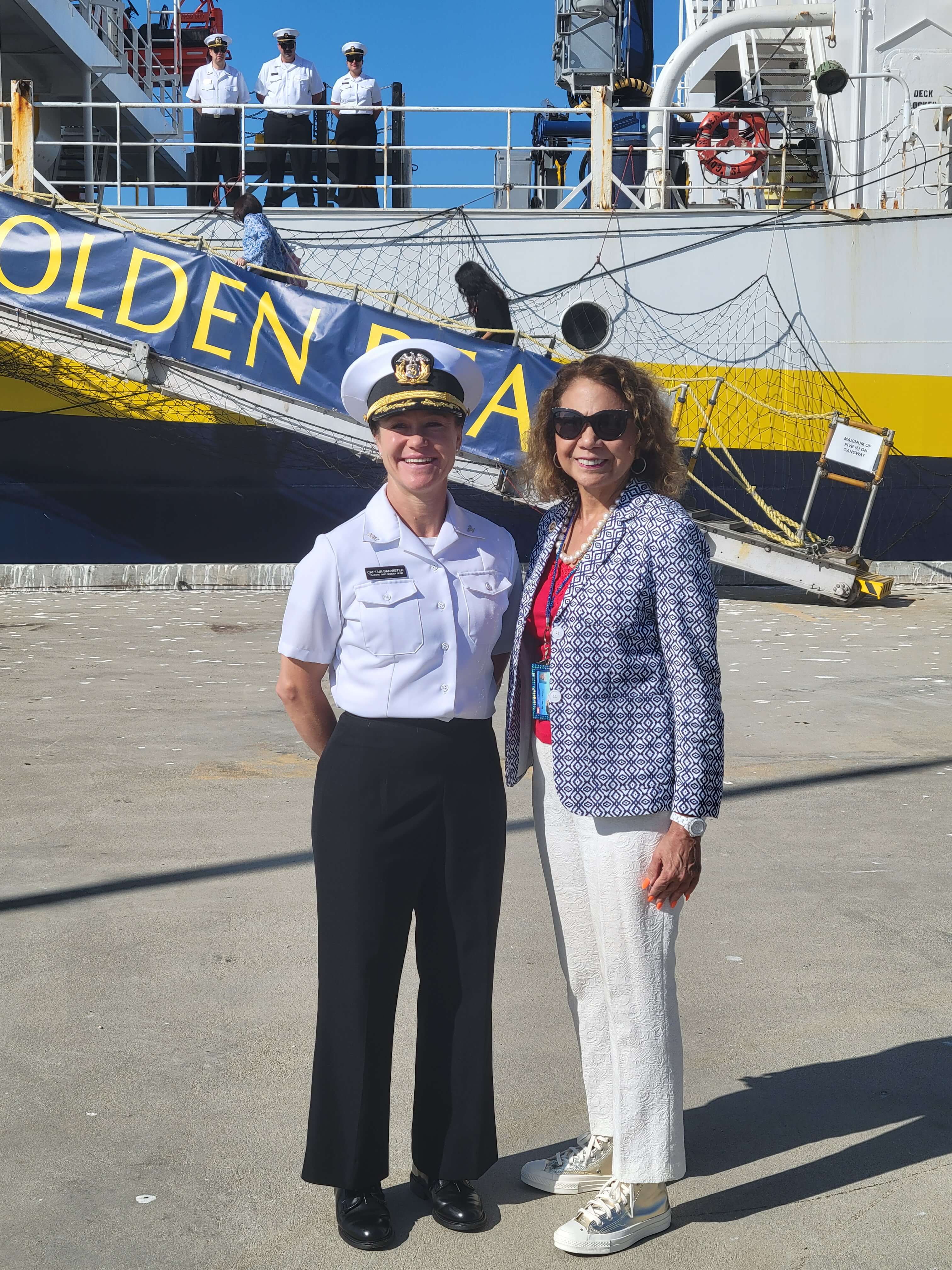 Captain Samar Bannister and CSU Chancellor Mildred García during a tour of TS
Golden Bear.
Captain Samar Bannister and CSU Chancellor Mildred García during a tour of TS
Golden Bear.
Wearing the most welcoming smile of them all is
Captain Samar Bannister, a Cal Maritime alumna who returned to her alma mater in 2022 to serve as the university’s Director of Marine Programs. Bannister also commands TS
Golden Bear, a floating classroom that provides two months of at-sea training every summer for first- and third-year students, known as the
Summer Sea Term, and serves as a laboratory for new marine technology.
During the 2024 Summer Sea Term, the ship visited four ports on the Pacific Rim—Honolulu, South Korea, Japan and Los Angeles—and opened the gangway to visitors at each stop. Bannister, along with crew members and cadets, offered tours of the ship to engage and educate the public on the maritime industry, a practice she says has also built cadets’ leadership skills. “They’re so proud when they get to show off the ship,” she says.
Lent to Cal Maritime in 1996 by the federal government, the former U.S. Navy ship previously served as a hydrographic survey vessel to map the deep ocean floor and was the largest and fastest oceanographic ship ever at the time she was built. The ship’s living spaces were remodeled before it was transferred to Cal Maritime—and the university has installed additional technology, including a 180-degree bridge simulator and a full-mission diesel simulator, to give cadets realistic experiences.
.jpg)
TS
Golden Bear’s bridge simulator “in” the New York City Harbor.
.jpg)
Cadets joke after an unsuccessful (virtual) attempt to bring the ship into port.
While participating in the Summer Sea Term, cadets live, learn and work on the ship, and apply the technological skills they acquired during the fall and spring terms that they need in order to perform every task for running the ship. Students take courses toward their major during the day, including radar, marine transportation, marlinspike—knot tying—and even celestial navigation.
Various classroom spaces on the ship are designed for experiential, hands-on learning. For example, engineering students take courses in the ship’s Power Lab and study how the individual machines in the engine room work.
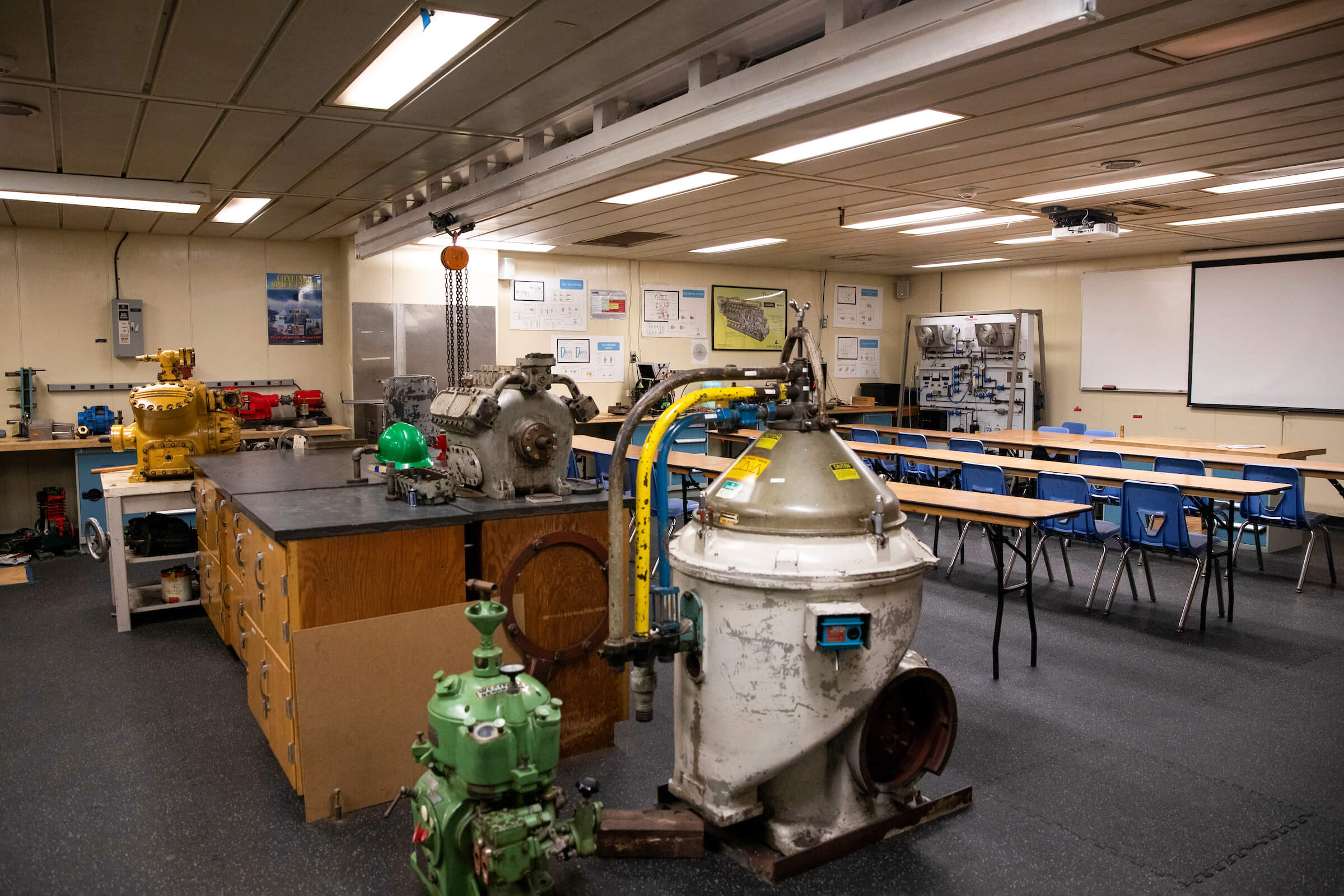
A TS
Golden Bear classroom called the Power Lab.
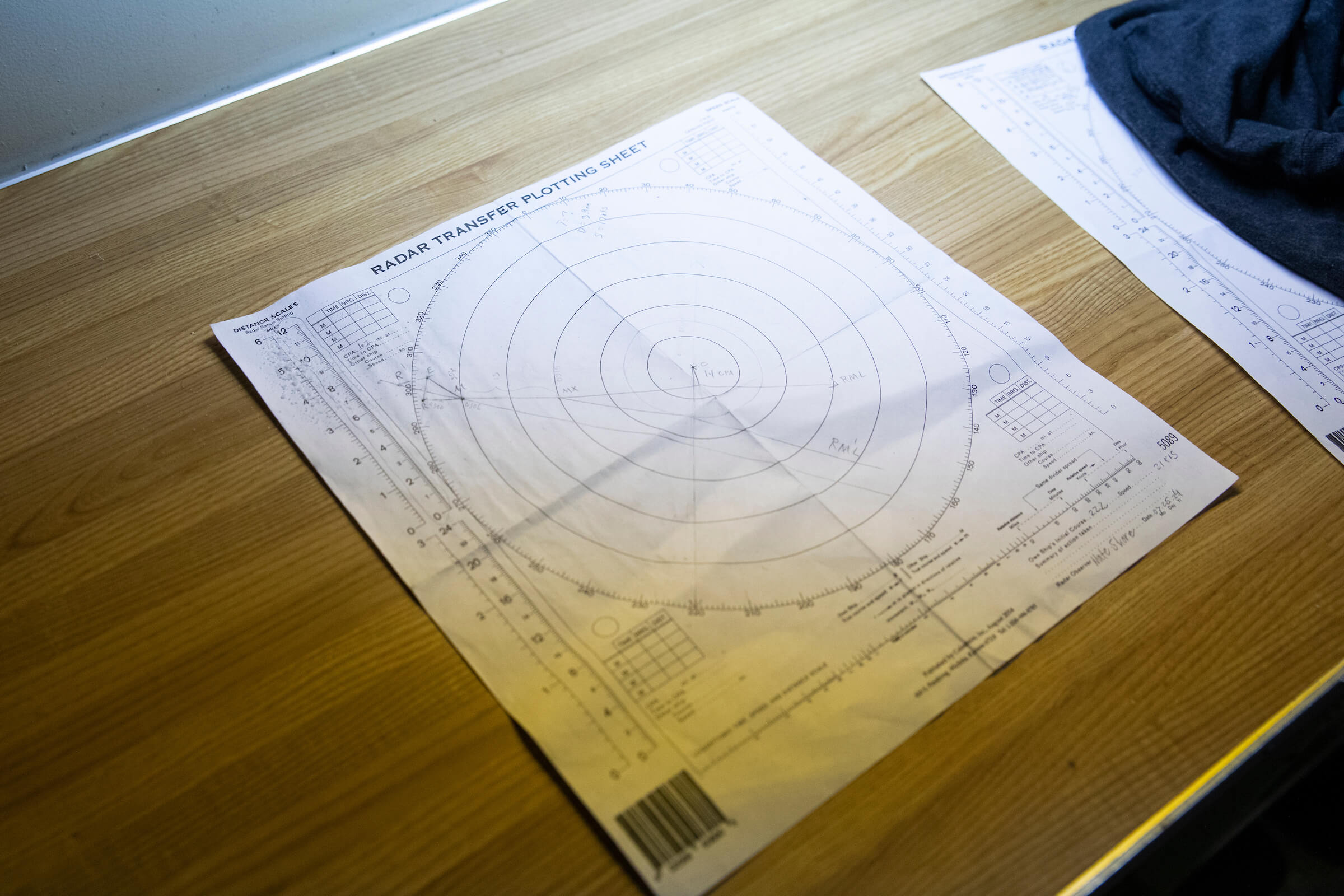
A radar plotting sheet used in radar class.
.jpeg) Marine engineering technology major Thomas Baird (right) Engineering cadet Thomas Baird says the hands-on learning and specialized education Cal Maritime offers is what drew him to the university. An older reentry student, Baird was working in event security when the COVID-19 pandemic began and forced him to reexamine his career trajectory. Acting on advice from his brother, Alex, who earned a degree from Cal Maritime in 2016, he began pursuing a marine engineering technology degree and now looks forward to graduating in spring 2027. Fun fact: His brother met his wife during a Summer Sea Term when the pair was attending Cal Maritime.
Marine engineering technology major Thomas Baird (right) Engineering cadet Thomas Baird says the hands-on learning and specialized education Cal Maritime offers is what drew him to the university. An older reentry student, Baird was working in event security when the COVID-19 pandemic began and forced him to reexamine his career trajectory. Acting on advice from his brother, Alex, who earned a degree from Cal Maritime in 2016, he began pursuing a marine engineering technology degree and now looks forward to graduating in spring 2027. Fun fact: His brother met his wife during a Summer Sea Term when the pair was attending Cal Maritime.
During the regular academic year, Baird and his fellow engineering majors take turns standing watch—monitoring functions—on TS
Golden Bear. They also complete a plant operations course on the ship in which they learn to operate and maintain equipment that perform critical functions, like boilers that provide hot water and water purifiers that provide safe water for drinking, bathing and cooking.
Baird says the education he is receiving is not only preparing him for life in the maritime industry, but for possible shoreside careers, as well, noting that his skills are applicable to a variety of different fields including diesel mechanics, purifying and even brewing. And, getting to perform the necessary tasks almost completely independently during the Summer Sea Term is empowering, Baird says.
Students are also assigned daywork depending on their major and complete projects and tasks that help maintain the integrity of the ship and keep it running well. For engineers, this can include engine maintenance and small electrical and plumbing repairs, and for deckhands, this can include daywork to perform preventative maintenance on the ship.
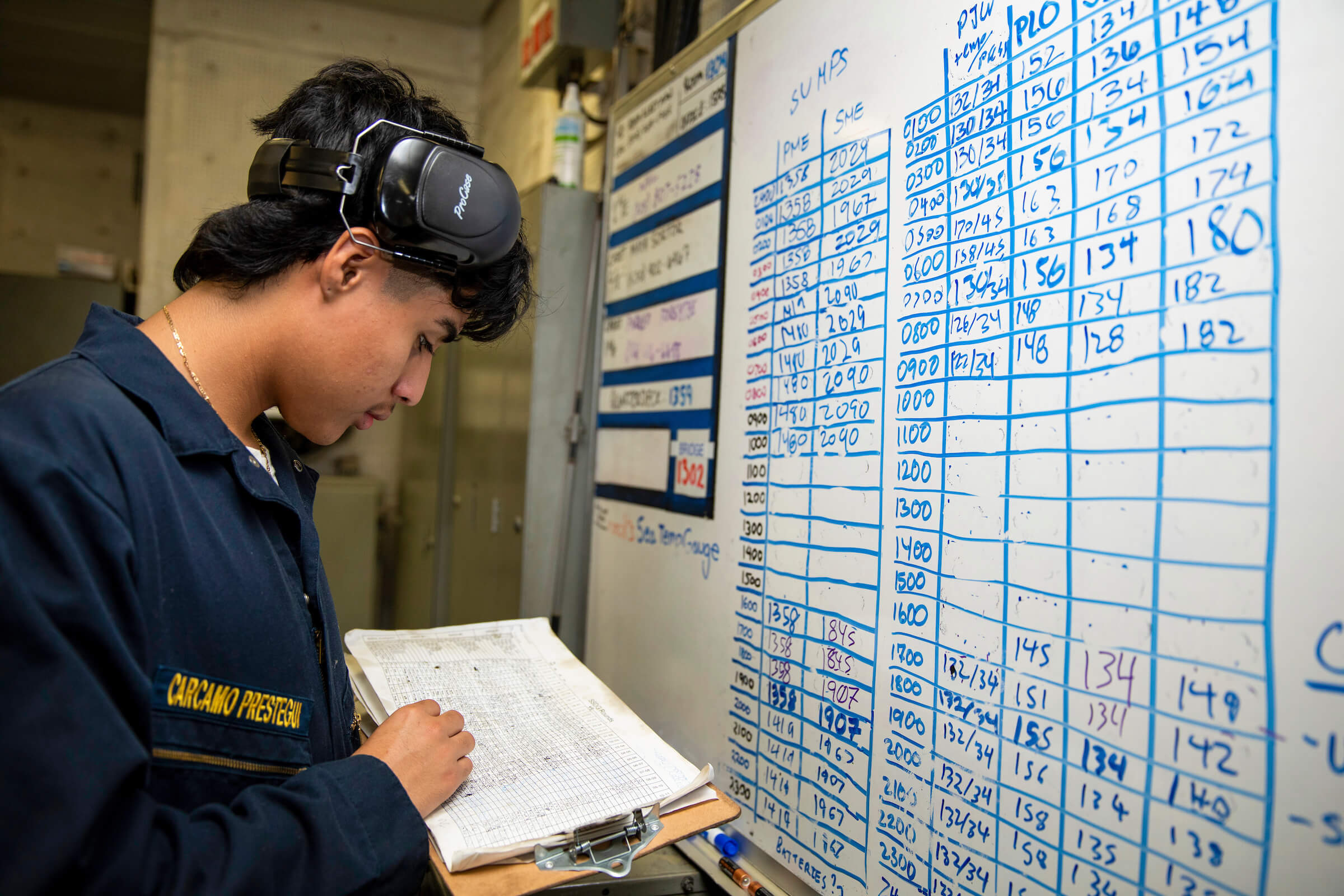
An engine room cadet compares recorded temperatures and levels for the main engine lube oil and jacket water against previous recordings to ensure nothing has changed.
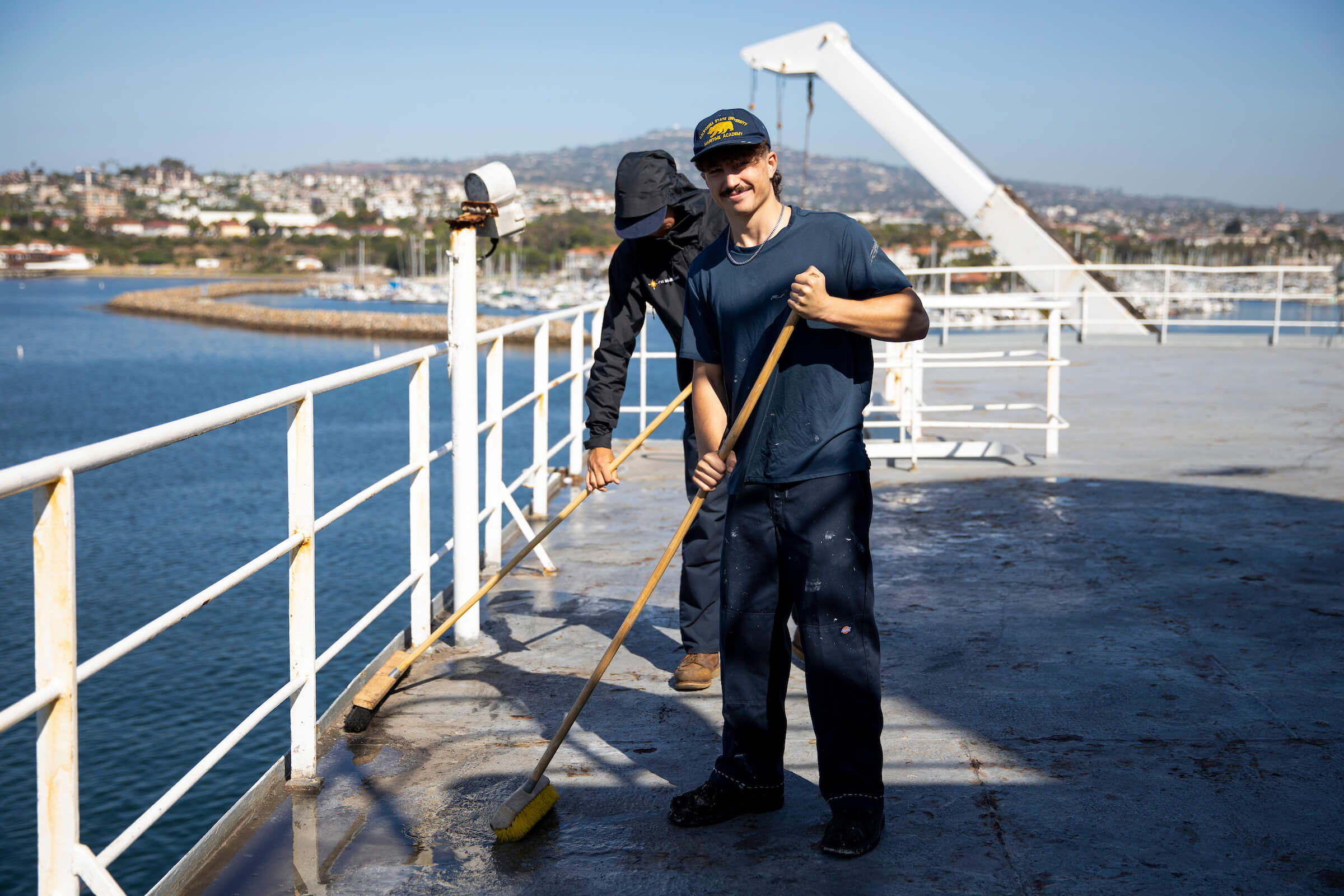
A couple of “deckies” cleaning during daywork. Keeping the ship clean, and chipping and repainting the ship, are important for preserving the steel and the ship’s integrity.
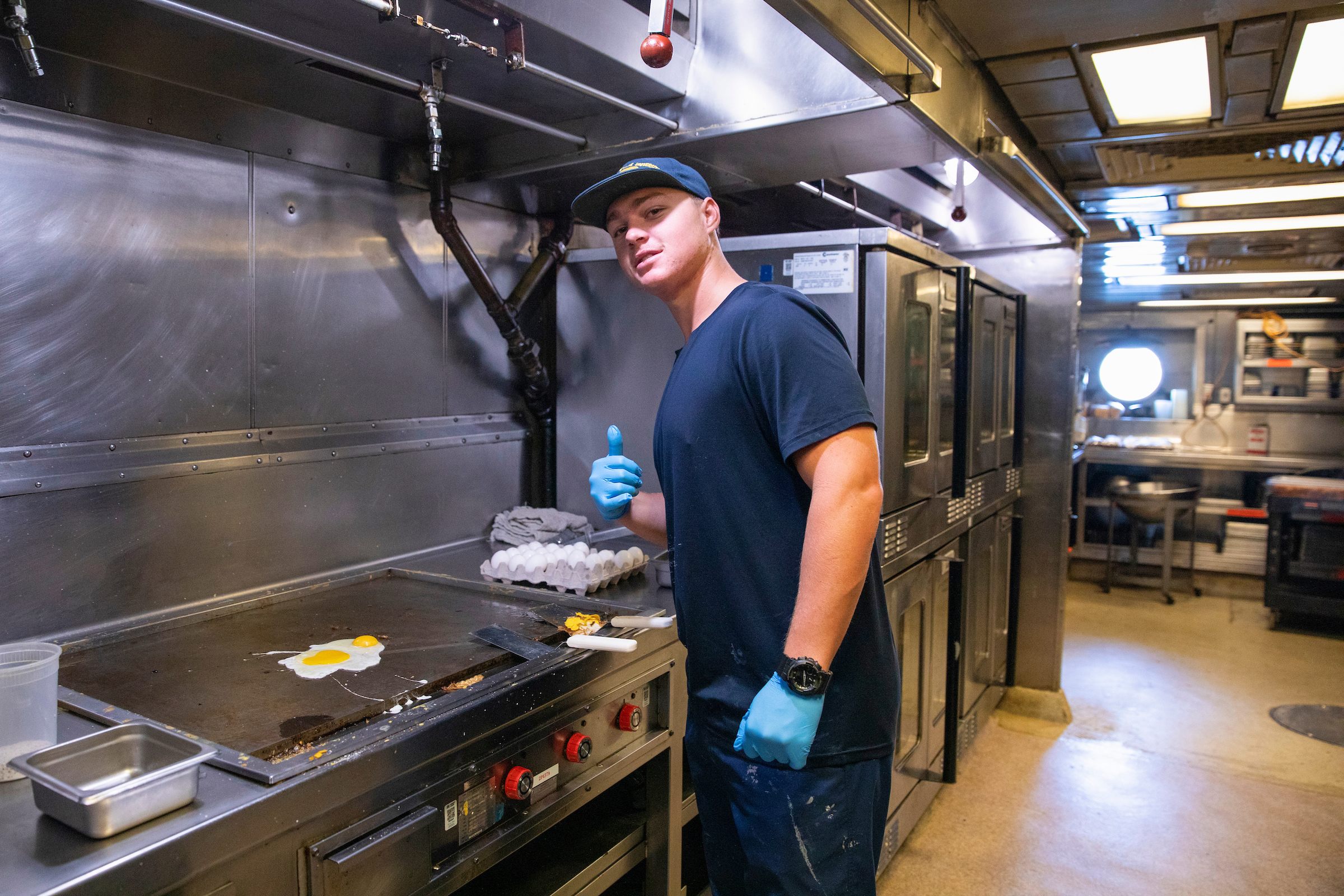
During TS
Golden Bear‘s 60 days at sea, cadets and crew consumed well over 6,000 pounds of chicken, 5,000 pounds of potatoes, 2,000 pounds of pasta and 1,000 pounds of coffee.
.jpg)
Some cadets choose to paint murals during their free time. Eight murals are painted during each Summer Sea Term, one for each division of cadets. Deckhands paint their murals in the “green deck,” pictured here, and engineers paint their murals in the engine room.
While TS
Golden Bear is used for research and education, some improvements have been made to allow the cadets to relax and have some fun. Cadets can spend their free time working out in the gym, reading a book from the ship’s library or participating in a group activity in “Pirate’s Cove.” Crew members like David Chrisman, who heads up the ship’s division of Morale, Welfare and Recreation (MWR), organize regular games and activities. In the month of June, for example, MWR hosted a movie night in recognition of Juneteenth, as well as an LGBTQIA-themed trivia session and other Pride Month events.
%20(1).png)
Since becoming the first female captain of TS Golden Bear and the first woman to serve as Cal Maritime’s Director of Marine Programs in 2022, Captain Bannister has led concerted efforts to outreach to and recruit women cadets. Sarai Alonso, pictured left shaking hands with CSU Chancellor Mildred García and right in the engine room, is a marine engineering technology major and one of the growing number of female cadets pursuing a merchant marine license. The 2024 Summer Sea Term saw a significant increase in the number of participating women cadets thanks to Captain Bannister’s efforts, with women making up nearly 20% of cadets.
Cal Maritime is preparing to receive a larger ship, Training Ship
Golden State, in late 2026, at which time TS
Golden Bear will be returned to the federal government. Five ships in total are being built for five state maritime academies including Cal Maritime. TS
Golden State will offer state-of-the-art lab space and classroom facilities, berthing for 600 students as well as faculty and crew, an onsite infirmary, an auditorium and a helipad. It is the first time in history these academies will have special-purpose-built vessels for training, according to Captain Bannister.
SUMMER SEA TERM BY THE NUMBERS
- 300,000 gallons of water produced for drinking, bathing and cooking
- 12,983 miles traveled
- 4,691 outbound calls totaling 1,472 hours
- 250 cadets and 49 crew members
- 17 time zone changes
- 4 ports visited
Cal Maritime is the only degree-granting maritime academy on the West Coast and one of only six state maritime academies in the U.S. In June 2024, the CSU
announced a proposal to integrate California State University Maritime Academy and California Polytechnic State University, San Luis Obispo in an effort to preserve Cal Maritime and its vital academic and merchant marine licensure programs.
Special thanks to Cal Maritime’s Captain Samar Bannister and Captain’s Assistant and Purser Jessica Fowler.